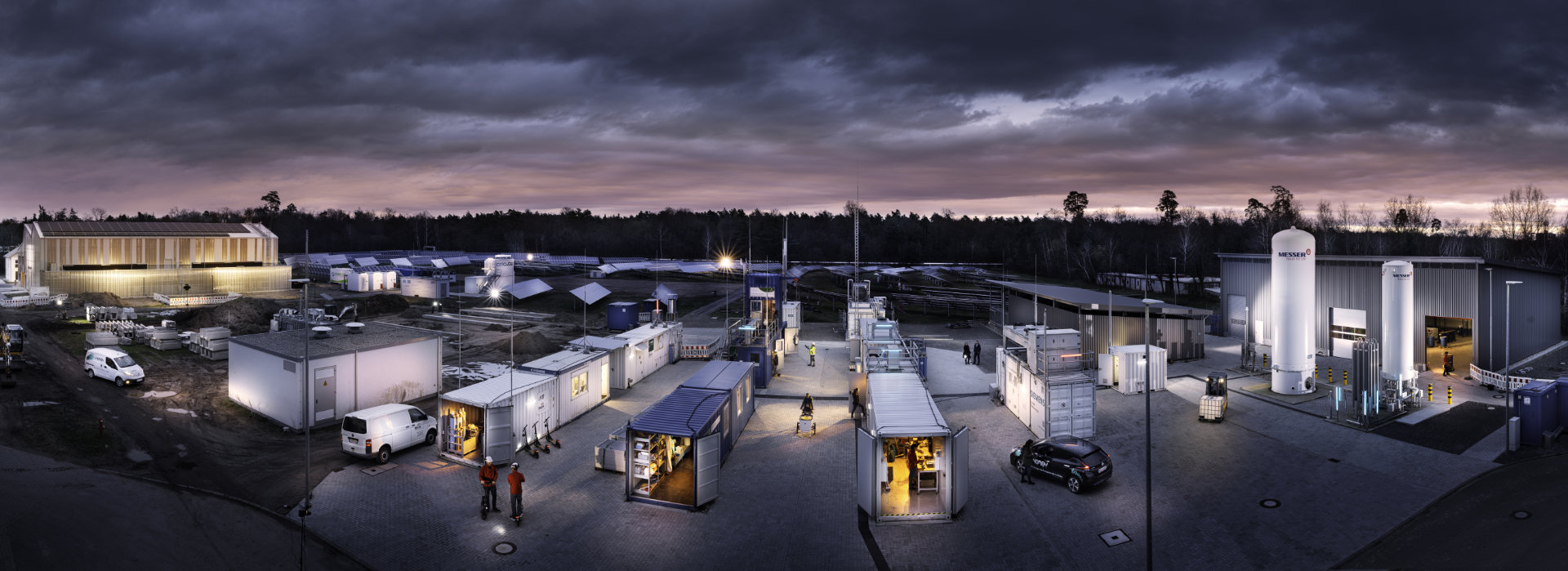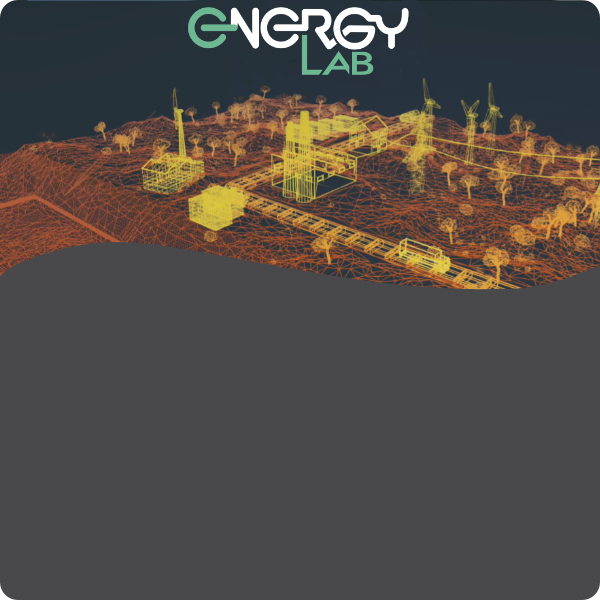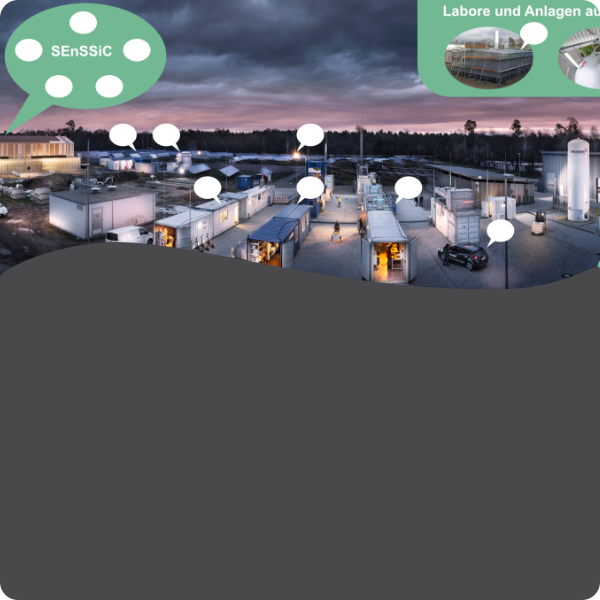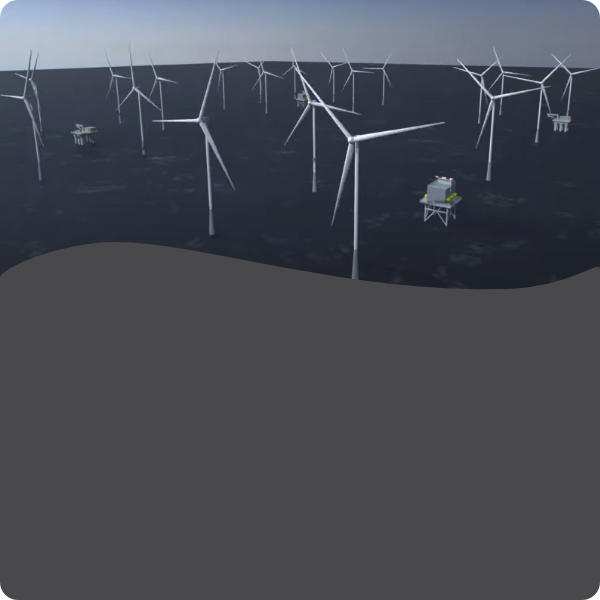Welcome to the Energy Lab
The energy transition is accompanied by many questions: How can energy be generated in an environmentally friendly way and stored with low losses?
What happens when the sun doesn't shine and the wind doesn't blow? And what if more electricity is suddenly needed?
To answer these questions, the Energy Lab is researching the intelligent linking of various energy generation, storage and supply options.
Research for the energy transition
The aim is to achieve climate neutrality by 2045 and to reduce greenhouse gas emissions by at least 65% by 2030 compared to 1990 levels. However, wind or solar energy cannot be generated consistently everywhere. Energy is often needed away from where it is generated and peak loads are to be expected at certain times. This dilemma must therefore be solved, because affordable and environmentally friendly energy should no longer remain a utopian dream.
As Europe's largest research infrastructure for renewable energy, the Energy Lab is taking on this major task. Here, the intelligent networking of environmentally friendly energy generators and storage methods is being investigated. In addition, energy systems of the future are simulated and tested on the basis of real consumer data. A system network links electrical, thermal and chemical energy flows as well as new information and communication technologies. The aim of the research work is to improve the transportation, distribution, storage and use of electricity and thus create the basis for the energy transition.
The Energy Lab is a project of the Karlsruhe Institute of Technology (KIT) in cooperation with the Helmholtz Centers German Aerospace Center (DLR) and Forschungszentrum Jülich (FZJ).
The Federal Ministries of Federal Ministry of Research, Technology and Space (BMFTR) and for Economic Affairs and Energy as well as the Baden-Württemberg Ministry of Science, Research and the Arts (MWK) are funding the Energy Lab.

Accurate analysis of fluid dynamics and mass transport in three-phase reaction systems requires experimental data from realistic setups. To expand its measurement capabilities, the 3PM plant at the Energy Lab has been upgraded with a gas recycle system using turbine compressors, creating a closed gas loop. Researchers from the Engler-Bunte Institute have now conducted mass transport measurements in the 3PM bubble column reactor under operating conditions during a five-day test campaign, significantly extending the range for fluid dynamic investigations.
Power-to-Gas
A joint publication by the KIT institutes IEH and ITEP on the frequency dependence of household loads has received the 2nd Prize Paper Award from the IEEE IAS Committee on Renewable and Sustainable Energy Conversion Systems. The study, based on experiments in the Energy Smart Home Lab (ESHL), was awarded on October 22 at ECCE Europe 2025 in Philadelphia.
Photo (from left to right): Ke Ma (Chair), Johanna Geis-Schroer (IEH), Giovanni de Carne (ITEP), Eduard Muljadi (Vice Chair)
Read the publication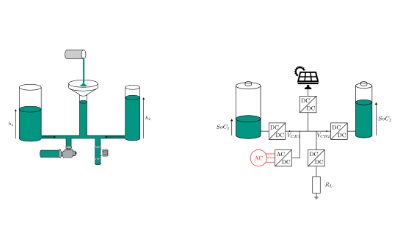
Ömer Ekin (IAI) and his team have developed an innovative, communication-free control approach for batteries in direct current microgrids with the State-of-Grid concept. By locally adjusting voltage, the batteries balance their states of charge and ensure stable grid supply without central coordination – a step toward more flexible and resilient energy systems of the future.
Link to publication
The pyrolysis technology developed and patented at the Karlsruhe Institute of Technology (KIT) has been awarded the INEOS Inovyn Gold Award. Scaled for industrial use by ARCUS Greencycling Technologies, the process enables efficient large-scale PVC recycling. Validated by international research partners such as Ghent University, the award highlights the global relevance of this innovation. The Carbon Cycle Lab, based at the KIT Energy Center and Energy Lab, demonstrates how excellent research can be transformed into market-ready solutions for the circular economy.
Website INEOS Inovyn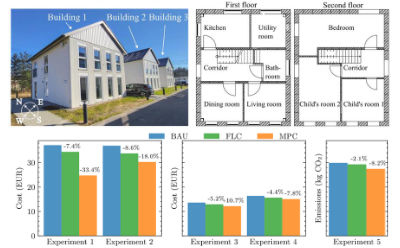
Felix Langner and fellow researchers at IAI have demonstrated the effectiveness of advanced control strategies for building energy flexibility under real-world conditions in a groundbreaking study. They evaluated Model Predictive Control (MPC) and Fuzzy Logic Control in the three identical experimental buildings of the Living Lab Energy Campus. The experimental investigations achieved CO₂ and cost savings ranging from 2.1% to 33.4% while enhancing comfort through optimized temperature regulation.
Link to publication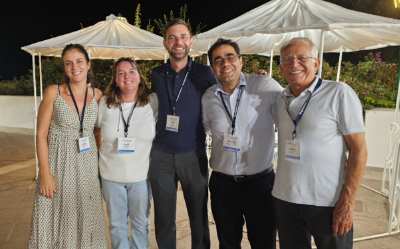
Renewable liquid carbon carriers from recycled plastic and biomass (residues) are crucial to enable the future carbon cycle. One of the most important conferences of this field – the Pyroliq III – was conducted successfully in September 2025 with significant contributions from KITs CCLab: Razan Alsharqawi, Amir Jalalinejad and Myriam Rojas Salas presented their scientific results from pastic and biomass liquefaction, while Axel Funke co-hosted the conference as chair. A remarkable integration of the plastic and biomass-based communities was achieved, where some of the challenges turned out to be more similar than anticipated.
Photo: Conference chairs Paola Giudicianni, Pilar Ruiz Ramiro, Axel Funke, Manuel García-Perez and Franco Berrutti (from left to right).
Conference Website